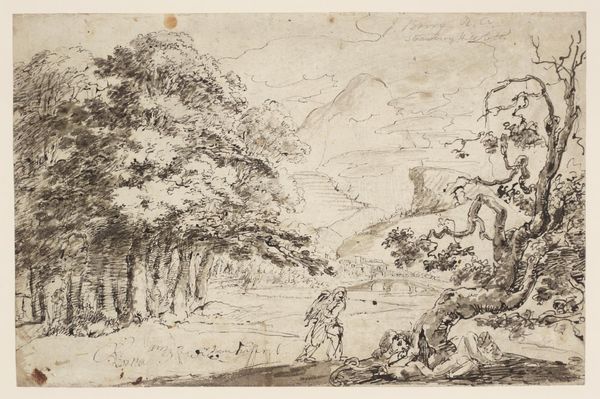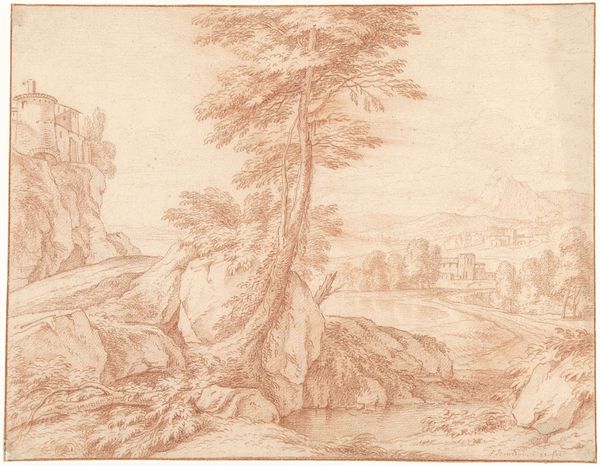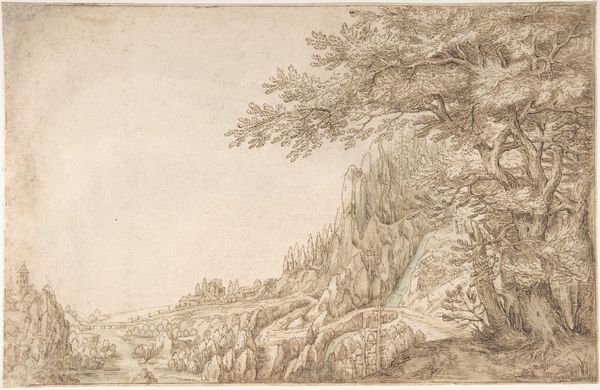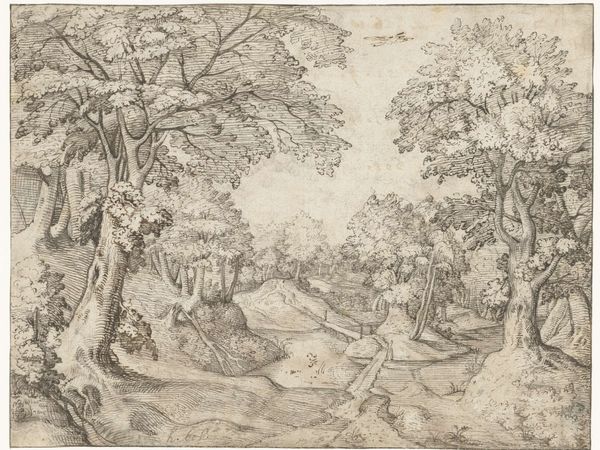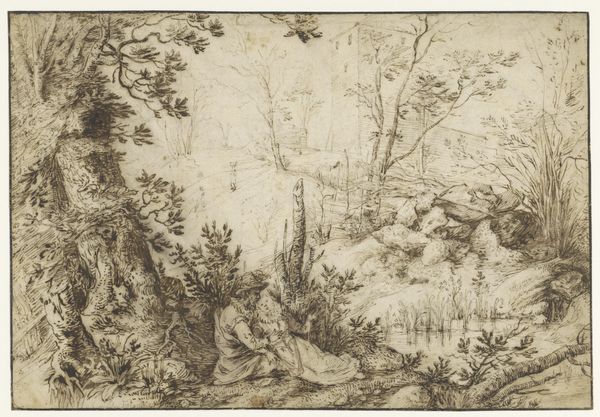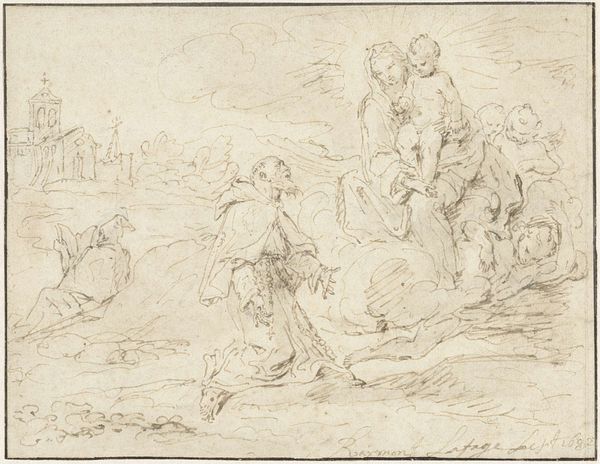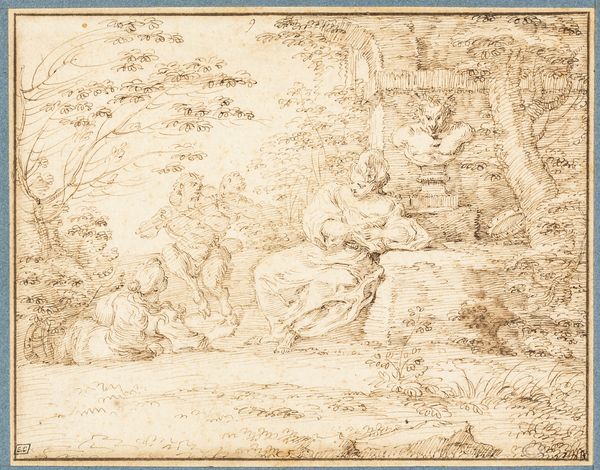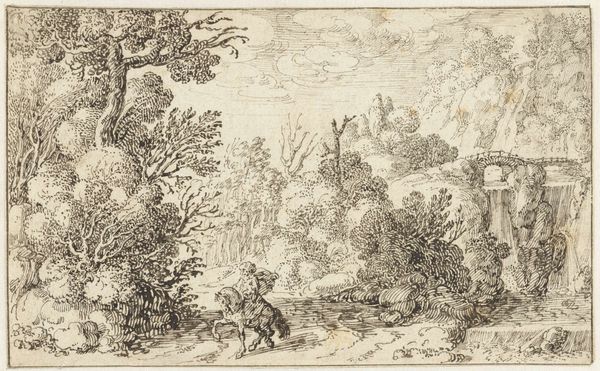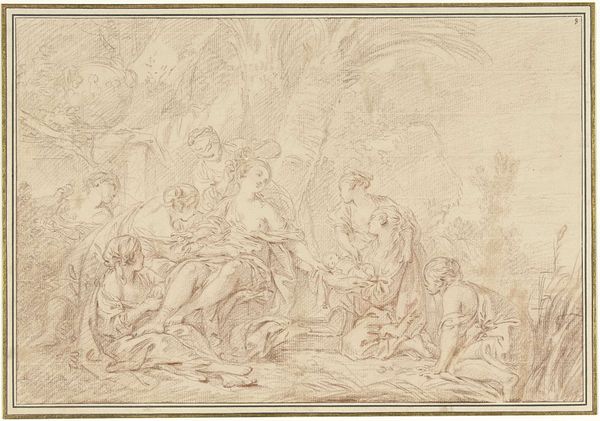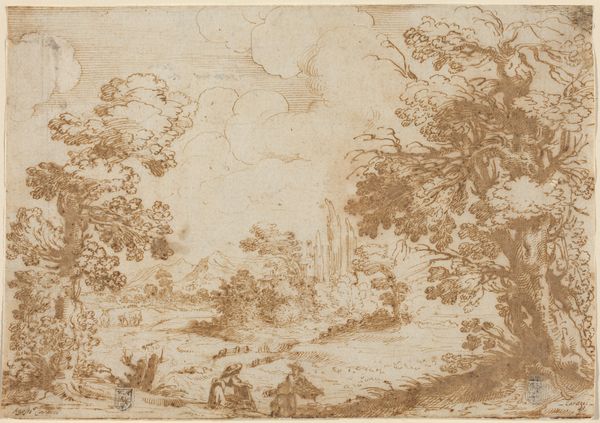
drawing, etching, ink
#
drawing
#
narrative-art
#
baroque
#
etching
#
landscape
#
etching
#
figuration
#
ink
Dimensions: height 245 mm, width 375 mm
Copyright: Rijks Museum: Open Domain
Curator: This is Pietro Testa’s “Landscape with Satyr and Putti,” dating roughly from 1622 to 1650. It's currently held in the Rijksmuseum collection. Editor: It’s wonderfully intricate! I'm immediately struck by the sense of playfulness amidst the formal landscape. There's a textural contrast here too; the delicate rendering of the figures against what appear to be the sharper lines defining the environment. What’s it made of? Curator: It combines etching with ink on paper. Consider the cultural context: landscapes in this period were shifting from mere background to become spaces of meaning, even narrative in themselves. Here, Testa embeds mythological figures into a very deliberately composed space. The Satyr, an established icon from classical mythology, appears passive, as cherubic putti seemingly invade his space. Editor: It looks like Testa wasn’t using preliminary sketches, but worked directly on the plate? You can almost follow the hand of the etcher. And I like what you said about ‘space’. We should address the division of labor, since etching involves very specific, sometimes dangerous materials. Curator: Exactly. And think about the market Testa was operating in. Prints made art accessible to a broader audience than ever before. An etching like this meant that classical imagery and the artist’s specific interpretation could be distributed and collected far more widely than paintings could. It democraticized the reception of art, while subtly asserting the authority of classical motifs in baroque society. Editor: You see the etching's reproducibility as inherently democratic, and it may be that ultimately these kinds of landscape images became incredibly commercializable…mass produced for a hungry middle-class, and influencing all sorts of design. Is there something subtly subversive in Testa subverting conventional use of classical allegory, bringing mythological themes closer to common life? Curator: I think "accessible" is perhaps a better term, at least in Testa’s immediate circle. The printing techniques influenced painting academies who could afford this piece, and how the dissemination of images influenced wider patronage and access of artists in workshops, allowing artists themselves greater recognition in the process. The printing techniques, even the failures that emerged through particular artistic labor in rendering details and making choices, added to the circulation of this imagery! Editor: So this particular "Landscape with Satyr and Putti" provides not just a picturesque scene but a valuable commentary on access, labor and evolving artistic value... fascinating. Curator: Indeed. And in appreciating Testa’s hand and wit, we can appreciate how early modern society made and consumed images.
Comments
No comments
Be the first to comment and join the conversation on the ultimate creative platform.



